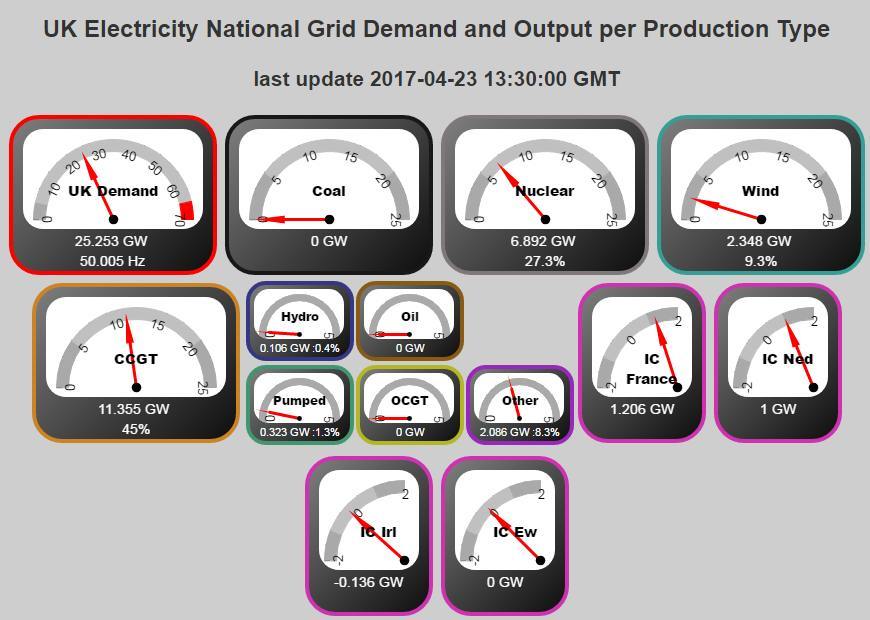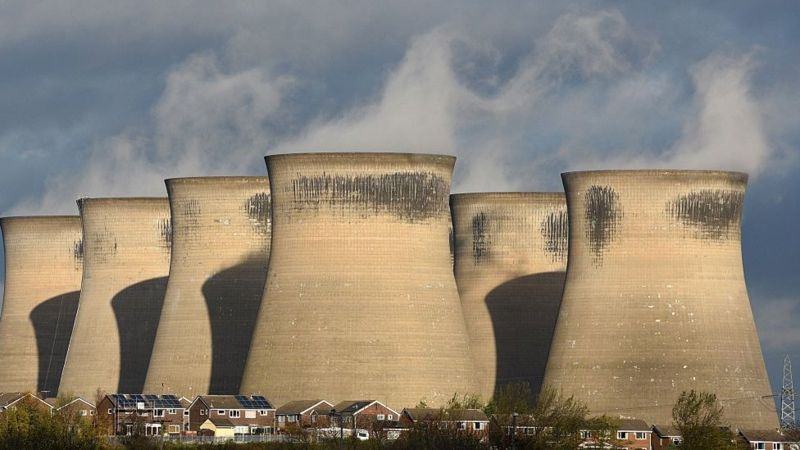UK lived a day without coal as a source of electricity for the first time since 1882

British miners drill coal in 1924. Photo: PA
Friday April 21, 2017 was a historic day for the UK power industry. For the first time since the industrial revolution of the 19th century, this industrial country got rid of coal as a source of electricity . If you are familiar with the history of Great Britain, you can understand the epoch-making of this event. Coal was mined here before the invasion of the Romans, that is, in the Bronze Age - this is indicated by the axes found in coal deposits. True, in ancient times coal was needed for other purposes - for firing (making bricks, iron), and not for generating electricity. For industrial purposes, coal will be used in the future, but not for power generation.
They got rid of coal in the electric grid for only a short period of 25 hours, but this is only the beginning. The trend is that the UK is reducing the proportion of coal in the national grid. According to the National Grid, the first day without coal as a source of electricity - for the first time in a century and a half - is a "turning point".

')
“Getting the first working day without coal from the beginning of the Industrial Revolution is a turning point in how our energy system is changing,” said Cordi O'Hara from National Grid. - The UK benefits from a wide variety of plastic sources of electricity. This combination of energy continues to change as the National Grid adapts the system to make these changes. But it is important to remember that coal is still an important source of energy as we move to a low carbon system. ””
On the day of April 21, 2017, instead of coal, the UK received electricity from the following sources:
- natural gas: 50.3%
- atomic energy: 21.2%
- wind: 12,2%
- biomass: 6.7%
- solar energy: 3.6%
- import: 8.3% (probably mainly atomic energy through a 2 GW channel from France)
- export: -2.3%
As can be seen, the main substitutes for coal in the national energy system are natural gas and atomic energy. The share of renewable sources is much less, but gradually grows.
Until Friday, the national energy system was able to hold out for long periods of time without coal. The record before that was 19 o'clock for the weekend in May 2016. Well, now managed to hold out for about 25 hours. It is nice that during this period we got a full day on April 21.

Detailed statistics on UK energy consumption can be found in the BMRS service . It shows that the last kilowatt from coal-fired power plants was received on April 20 in the interval from 22:30 to 23:00 (137 MW), and the next - only on April 22 in the interval from 00:00 to 00:30 (19 MW). By the way, today, on Sunday, April 23, the United Kingdom, too, is still keeping coal already from 8:00 am (time period 16) to the present, that is, until 2:00 pm local time (4:00 pm Moscow time).

On April 21, 2017, the UK stayed without coal for the first time since the first connection to the central power system of the Holborn Viaduct coal power station (Edison Electric Light Station) in 1882, which was built by the Thomas Edison Electric Company of Thomas Edison. The station began work on January 12, 1882, three years after the invention of the electric incandescent lamp. Steam from the boilers supported the work of the 27-ton turbine. Generator power was 125 horsepower (93 kW). At first, the generator gave energy for 968 street lamps with incandescent lamps, and later 3000 lamps were connected to it.
The second in the world coal power plant of this type, Thomas Edison, opened in September 1882 in New York.
Interestingly, the historical station Holborn Viaduct was closed due to damages in just four years - in 1886, and the street lights were transferred back to kerosene. But in the following years, many other coal-fired power plants and CHP plants for home heating were opened. So much so that in 1956 in the UK, the Clean Air Protection Act Clean Air Act was passed. In order to fight intolerable smog, coal-fired power stations were forbidden to be placed within the city.
Since the 1970s, coal for CHP began to be rapidly replaced by natural gas, which has abundant reserves in the North Sea, and in the 1980s, the share of nuclear energy increased to 25%. Since then, the share of nuclear power plants has remained at about the same level, and coal has continued to be ousted by natural gas and other sources.

Ferrybridge coal power plant in West Yorkshire closed in 2016 after 50 years of operation
Five years ago it was difficult to imagine. In 2012, 17 coal-fired power plants with a maximum capacity of 23 GW operated in the UK, which roughly corresponds to half of the UK's peak power consumption. Several of them were closed in 2013 according to EU regulations on reducing the amount of acid rain, and a few more became unprofitable and closed after they were obliged to buy quotas on CO 2 emissions at a price of £ 18 per tonne.
Now there are 8 coal-fired power stations at 14 GW, which are very hard to compete with stations on natural gas, where there is not such a heavy burden of CO2 emission quotas. It is even harder to compete with renewable electric power, which is subsidized by the government.
In 2016, the British government set the goal to close the last coal-fired power plant by 2025.
The last deepest coal mine in the UK closed on December 18, 2015 . Production continues in 26 open pit mines.
Source: https://habr.com/ru/post/403401/
All Articles